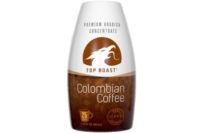Guest Column
The benefits of enhanced Direct UHT for high-protein beverages

The Tetra Pak® Direct UHT unit has many variations and a couple of combined heating solutions.(Courtesy of Tetra Pak)
There’s not much that irks beverage companies more than waste, whether that’s wasted time, money or product. However, estimates say as high as 30% of all food that's produced globally is lost or wasted before it's consumed.
Meanwhile, the beverage industry is continually looking to better serve consumers by combining value, quality and variety with great tasting products. Doing this, while also meeting business imperatives such as a flexible supply chain to reduce wasted time and resources, can prove difficult. One solution to that challenge is Direct UHT (ultra-high temperature or ultra-heat treatment) processing, which enables the needed flexibility of a long product shelf life, while meeting consumer desire for more complex products such as high-protein beverages.
The value Direct UHT processing brings
In UHT processing, shelf stable, or aseptic, products are heated for a short period of time at a very elevated temperature, killing off harmful bacteria that would otherwise spoil them. The process results in a product with a long shelf life that can last well over six months at room temperature and can then be moved to refrigeration and served chilled on an as-needed basis. This means brands, retail stores and restaurants can build up inventories, minimize waste, reduce the number of deliveries needed and manage a sustainable operational strategy.
A Direct UHT system handles a broad range of applications, and it’s often preferred for more challenging products like high-protein, plant-based and other formulated dairy products. As we see consumer preference grow for high-protein products, Direct UHT becomes the stand-out processing method for its gentler treatment of protein-rich formulations, alongside other benefits. But what is it about Direct UHT that makes it the go-to solution for these more sophisticated formulas?
Quality Preservation
The Direct UHT method injects steam directly into the product, which allows for precise control over the heating process. This results in a more consistent and high-quality result, ensuring better preservation of taste, color and nutritional value, which is critical in high-protein products. The rapid heating and cooling process reduces the risk of protein denaturation, among other heat-induced changes, which can impact the protein structure and physical properties that affect taste, color and consistency.
Efficiency
Throughout the beverage processing operation, Direct UHT units continually prove their value through an efficient handling of complex products. For example, the external condenser design achieves reduced CIP (clean in place) times. This results in longer continuous operation between cleaning cycles, further improved by the high-resolution sensors that establish an accurate frame of reference for measuring a clean system. Further, better control of fouling is accomplished through the external condenser using AIC (Aseptic Intermediate Cleaning)—a short cleaning done while maintaining production conditions to extend run times between full system cleanings. A new low-loss balance tank design works to minimize product loss as well.
The difference between Direct UHT and other methods such as Indirect UHT can be illustrated by the heating and cooling profiles. Starting from 80°C (176°F), Indirect UHT has a slower climb to the ultra-high temperature and a longer decline. In contrast, Direct UHT instantly heats to the ultra-high temperature with a short holding time, followed by flash cooling. This rapid process in Direct UHT minimizes the overall heat load, making for a more efficient process.
Flexibility
A Direct UHT unit offers the flexibility to handle a wide portfolio of products. Whether using the direct mode for Direct UHT processing or multimode, a combined heating solution that offers the Direct and Indirect UHT options, this unit allows customers to achieve the best of both worlds—high-quality products and versatile production capabilities that cater to individual product needs. In this way, you can switch from one UHT system to the other, or combine them both, depending on the required result. This enables maximum flexibility of a producer’s plant.
As consumers become more health-conscious, the demand for high-quality, protein-rich beverages will only increase. Direct UHT processing will play a crucial role in meeting this demand by ensuring superior product results, while allowing for the variety of new products which will surely enter the market. With the ability to meet quality standards, efficiency in production and the flexibility required for a diverse product portfolio, processors will be able to meet those needs for years to come.
Looking for a reprint of this article?
From high-res PDFs to custom plaques, order your copy today!







